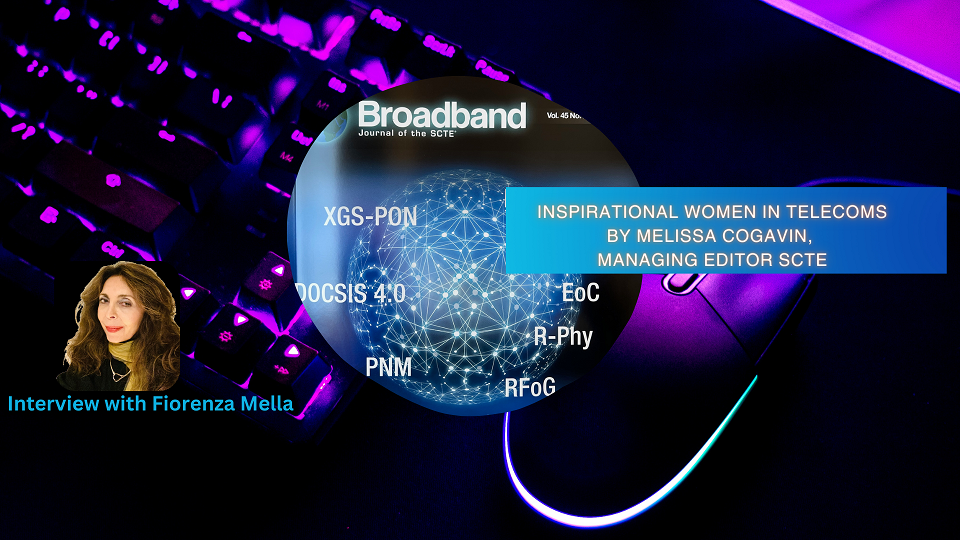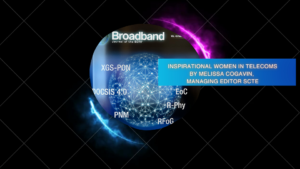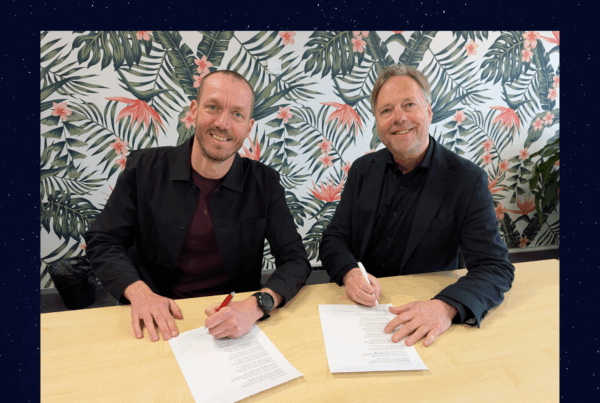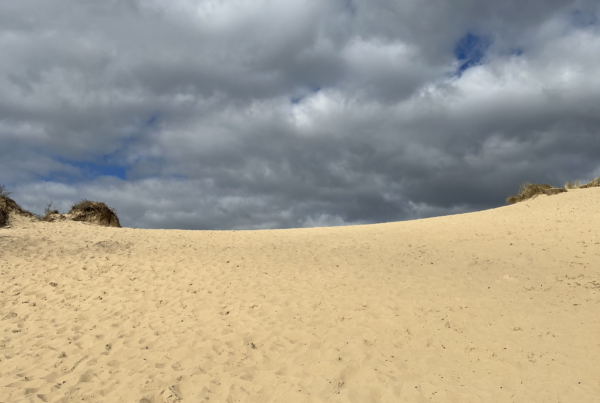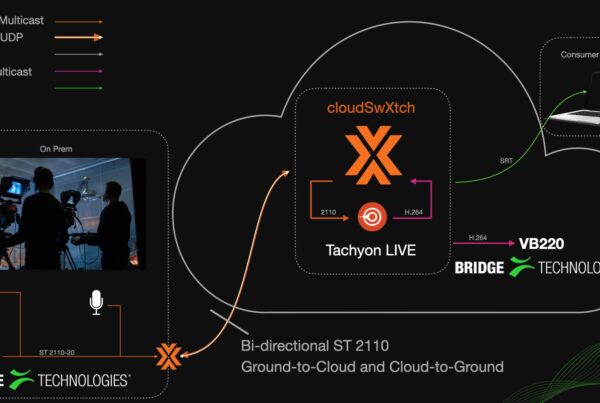How is the future looking like for women in Telecommunications in 10 years’ time?
Fiorenza Mella, Maria Tyrrell and Dr Gillian Kendrik talked to Broadband Journal about their achievements, how they got started in this sector and what motivates them now.
By Melissa Cogavin, Managing Editor SCTE.
Interview with Fiorenza Mella, CEO at Xpresso Communications
Fiorenza Mella is an applied linguist with a passion for technology, data science and arts. She is an international communications and content strategist, marketing and PR specialist with commercial skills and intercultural competences. A visionary leader who enjoys building teams, growing businesses and envisioning future dynamics.
Based in the Netherlands, and with over 25 years’ management, business development, marketing and communications in electronics, broadcast, telecommunications and related markets, Fiorenza is the strategic mind behind the expansion of various businesses and the originator of several successful international branding campaigns as well as the creative voice of numerous social media accounts.
Following a career as managing director of broadcast and technology companies, in 2012 she founded Xpresso Communications aiming at “humanising” communications in technology-driven markets.
Xpresso Communications is headquartered in The Netherlands with home offices in London, Paris, Cologne, Rome, Bucharest and New York.
She is a fluent speaker of English, French, Italian, Spanish and Dutch.
Fiorenza has an M.A. with Summa Cum Laude in English/Applied Linguistics, as well as a B.A. in communication sciences.
What first attracted you to the telecoms/broadband industry and how did you get into this business?
A few years ago a degree in Communications Sciences and Foreign Languages and an MA in Applied Linguistics confronted me with a career choice: Would I teach languages? Would I move into research?
With a certain faith in serendipity, I let opportunity present itself to me, and it soon did. A friend of mine asked me to help translate a technical manual highlighting a DVE, a hardware-based product generating special 3D effects and animation for the broadcast industry. That was an entirely unknown domain to me as an avid but largely traditional lover of literature – technical translation was well outside of my wheelhouse. Excited by the challenge but anxious that it might be a realm entirely outside of my cognitive capability, I asked if it would be possible to see, feel and touch the technology I was supposed to write about.
I entered a demo room surrounded by LEDs and I think I probably felt like an astronaut sitting in a real shuttle for the first time, after finishing their theoretical studies and simulations. I fell in love with the unknown: a moment of ‘fatal attraction’. That was the start of my career in broadcast technology. Tempted initially by the familiarity of the academic world, I instead decided to throw caution to the wind and launch into an applied role. I was given three months to learn how to use three systems (a DVE, a character generator and an editing system) and to be able to give a demo for each of them. Not yet fully aware of what I was getting myself into, I had to place a bet on myself – a bet that I had the determination, drive and aptitude to make it work. It was a bet I won. Helped immensely by a friend who gave me a crash-course in the basics of engineering, I was soon repairing hardware, installing it and training on it. I’d been bitten by the bug; technology was in my veins.
What, if any, mentors helped you along the way?
I’ve had a few mentors who have supported my curiosity and desire to develop my technological expertise. One of them – David Hughes, a brilliant engineer and passionate individual – was fundamental in increasing my technical knowledge and offering me a job at Dynatech, an American company with European Headquarters in The Netherlands.
I moved with no indecision to The Netherlands, a place far more meritocratic for women in tech compared to Italy back then. David’s support was crucial when I started working at a global level with different technology requirements and cultures. Here, I really gained the opportunity to start introducing my instinctual, theoretical and practical knowledge of language into the world of technology (or technology into my world of language perhaps: the crux of the fusion remains for me – deliberately, I think – indistinct). My job involved a lot of experimenting, innovating, and constantly learning. I would travel with heavy flight cases (back then we were moving around big boxes and cables – the software solutions of today were but a dream), proceed with installation and then engage in the part where my real strength lay: demonstration and training.
What have you learned along the way as a woman in a male-dominated environment?
I always experienced it as an advantage, but arguably that’s because I made a deliberate effort to try and construct things that way – a task that wasn’t always easy, and means I certainly understand those who have had more challenging experiences in their own journeys. My experiences of discrimination were never overt, but I certainly always felt a pressure to outperform my male peers just to be held as an equal – which may be far more about my conditioning than the actions of the people I actually interacted with.
When I moved into a commercial role, I think the general feeling of curiosity that was held towards me – a petite Italian woman who understood engineers’ needs and spoke the same tech language being something of a novelty at that point – actually served as a benefit; it drew people in and served as an ice-breaker and form of connection. That was back then, when sales were very much about physical products and demo units, and I was regularly closing big deals at shows like NAB and IBC. These days, I’ve segued into marketing and communications, and the industry has hugely changed in what and how it sells: that form of connection with clients no longer comes from the novelty of being a woman, but from years of industry experience instead.
What are the main challenges for women in this industry?
I would say that the main challenge is to become one of those women in this industry: to break in in the first place – to get to know this industry and follow an educational path that matches the increasing needs for technical staff across the board.
Broadcast used to be a niche space for audio-visual solutions. Nowadays it’s a big container that includes several domains and is connected with other technology fields such as broadband and telecoms, to name just two of the biggest. All these industries have shifted to cloud and software-based solutions, bringing an increasing connection with IT and software, and meaning that those entering the field need – somewhat paradoxically – a wider, broader and more holistic understanding than ever, but also, a more niche area of specialisation. As with almost any industry, education and an appetite for new knowledge are going to be the crucial points of differentiation in a competitive employment market. But women also shouldn’t undervalue the soft skills they can bring to areas such as communication and management. These skills matter.
What would improve opportunities and prospects for women looking for a career in telecoms?
My suggested advice stands for both women and men together, in all honesty: education, passion, and flexibility. Being involved in technology requires constant learning, experimentation and change. Individuals will improve their own prospects when they foster these values, meaning being open-minded as to how experiences of all types might contribute to their growth.
From an industry side though, we can encourage this through improved access to post-graduate (and indeed, even university level) mentoring. And again, for both sexes (and none), creating a work environment and culture that is genuinely respectful of work/life balance.
What are you most proud of in your work?
Technologically, I am proud of one challenging project that called upon me to develop a new solution which allowed the shooting of an animation TV series with a simultaneous double chroma-key setting. It was an innovation that enabled the production company (Back then I was the Managing Director of Toonder Studio’s) to carry out 100-day production in a more efficient and less costly way by reducing both acting and editing time.
But on a broader industry level, the creation of my own business has been a huge personal achievement, not just because it has been successful, but because it proved to me that my values do have a place in this industry: human connection, openness and collaboration, a non-hierarchical organisational structure and truly flexible, remote working conditions that value talent and output, not hours behind a desk.
What do you see the future looking like for women in this sector in 10 years’ time?
I am truly positive about the increasing presence of women in this technology-driven sector – both because there are better opportunities than ever in software development and engineering, but also because as the industry broadens and diversifies, there is a more diverse range of skills and attributes that will carry value. With any luck, more flexible working conditions and improved educational tracks into the industry will combine to not only bring a new, younger generation to the industry, but to also encourage back those who have left because the industry previously wasn’t able to accommodate their needs.
The statistics seem to support the overall positive trend for women in the industry. On the software side, there are over 195,349 software programmers currently employed in the United States: of which 28.7% are women, while 71.3% are men. Whilst that’s by no means parity yet, it is significantly better than it was just a few years ago, and better than many other comparable industries. And the growth of remote work as the ‘new normal’ seems likely to improve that number in the future; in the UK, female engineers in general (not software-specific) increased from 13% to 14.5% in 2022, and in the USA, the growth seen was from 13% to 17% between 2019 and 2021.
Where will we see you in 5 years’ time?
I will be still communicating (with Xpresso Communications) and learning about technology while devoting more time to tech start-up consultancy – a side-project that indulges my love of innovation. I recently started studying data science out of curiosity but also with a view to future business deployment: I’m as fascinated by the unknown as by any future-ready plan – so just as serendipity guided my entrance into the industry, I’ll allow it to keep guiding my path forward now.

